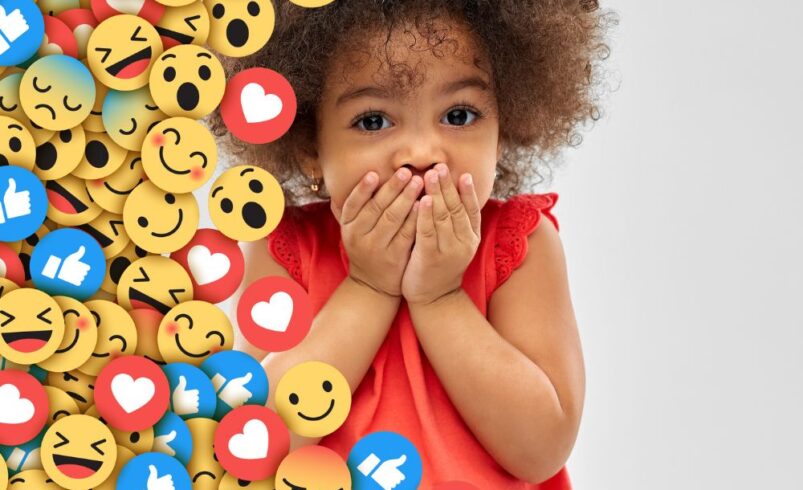
At StoryLab we are all about social media and today we are taking you on the trip from child to adult with stops where every kid sings “Wheels on the bus” and stargaze into their eyes when they see Cocomelon’s ladybug.
Between YouTube kids shows, TikTok dances and around the world tours on Instagram reels, generation alfa is taking the digital world and making it their playground, something that millenials for example, could not have imagined. Kids are taking social media platforms like Facebook, Instagram, TikTok, and Snapchat and transforming them into virtual hangouts where they explore, learn, and socialize. But with great power comes great responsibility, and the influence of social media on child development is the hot tea that’s spilling all over whether into a psychologist’s office, TV shows and even in mommy and me groups.
No need for imagination here but let’s entertain the idea: Imagine a ten-year-old discovering the world through an Instagram feed. He can travel from Bangkok to France, India to the UK and even take a detour in New Zealand. Pretty dope right? The exposure to all these different cultures, ideas, and lifestyles is very enlightening and enriching, especially when it comes to satisfying the curiosity of these kids with the swipe of a finger! Online activities can stimulate kids’ minds by bringing the world to their pockets!
But let’s not put a ring on it just yet and marry the idea that social media is the best thing ever for kids. These same platforms that offer educational engaging content are also the house of potential risks like filtered images and unrealistic photos that make children feel like they do not own up to the standards of societies, like the over spending of some that makes kids feel like they are not financially capable to keep up with their generation and these things lead sometimes to depression and shoots a direct hit on their self-esteem which manifests in their subconscious for a long time. There’s also the issue of cyberbullying and peer pressure. You see, when someone is hiding behind a screen, it is easier to be hurtful, and the effect on children is devastating, in some cases leading to long-term emotional and psychological damage.
Then there’s obviously the issue of physical health and outdoor activities. Remember the days when kids spent hours playing outside, riding bikes, and building forts? It is no longer the case in today’s digital world, kids prefer to watch peppa pig rather than run and jump in muddy puddles, or play fortnite with their friends rather than build mattress forts. All this blue screen time is leading to a more lazy, sedentary lifestyle. The result? A rise in childhood obesity with unstable sleep patterns.
Safety is another biggie. Kids do not always understand the importance and value of privacy, making them vulnerable to online predators, perverts and cyberbullies. Sharing locations, pictures, family information, contact details and other small things can lead to a safety risk to to a lack to privacy.
So, what should parents do? First, set some ground rules. Limiting screen time and encouraging offline activities can create a healthier balance. Being involved and aware of what kids are doing online by enabling parental controls is crucial but also by discussing with them and understanding their perspective on what is happening with them online. It’s also vital that parents explain to their kids how to spot what’s real and what’s fake, whether by equipping them with the tools they need to navigate the digital world safely or by showing them examples, especially that the latter goes a long way. If kids see their parents balancing their own screen time and engaging in offline hobbies, they’re more likely to follow in their footsteps. Ever tried a no-phone dinner? I think it’s time!
In the end, social media is neither all good nor all bad. It’s a powerful tool that, when used wisely, can offer a lot of benefits. But like any tool, it needs to be used responsibly. By guiding children through it with care and attention, we can help them take advantage of the benefits of social media while minimizing the risks. The goal is to ensure they grow up to be well-rounded individuals who can thrive both online and offline.
So next time you catch your kid giggling at a TikTok video or posting a selfie with a funky filter, join them! And then, gently remind them that there is a world outside the screen. Because, at the end of the day, it’s all about balance—and a little laughter never hurt nobody!.





